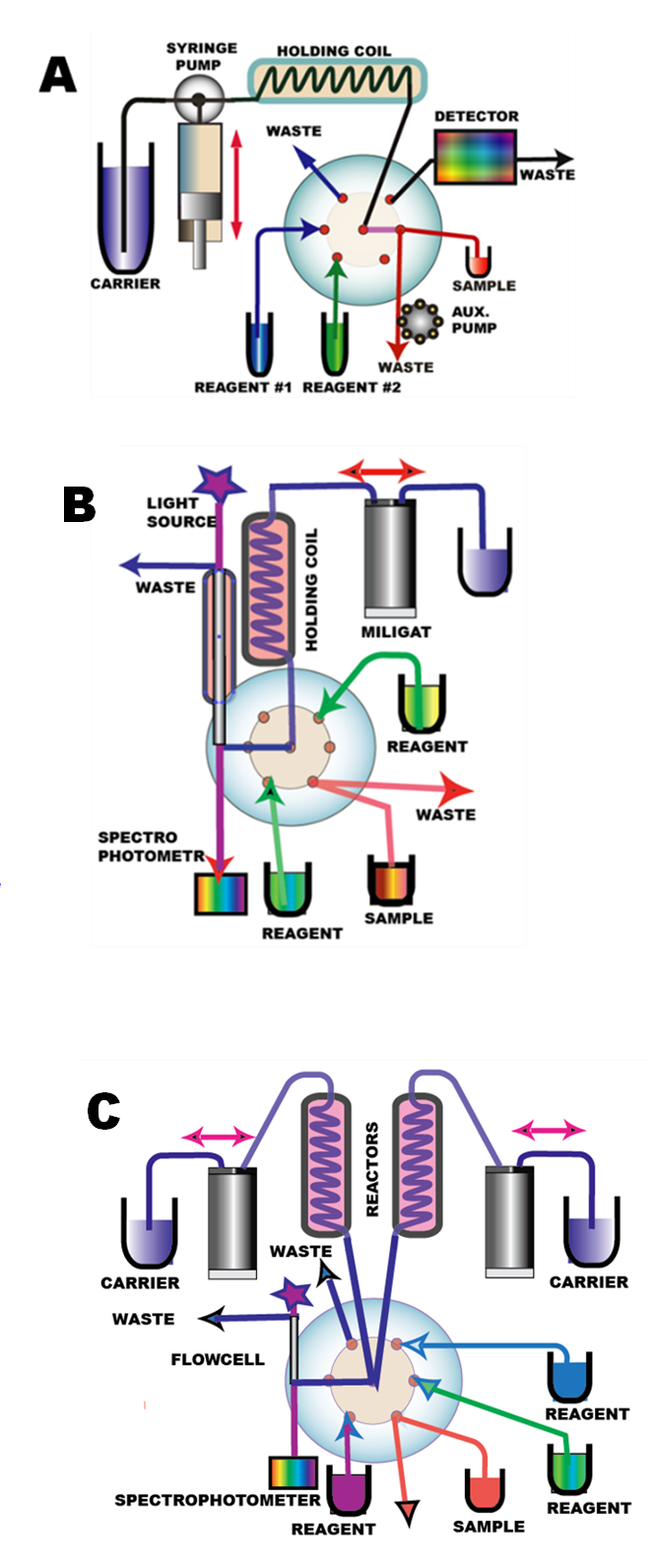The multiposition valve is the hub of a SI instrument. In a single line system (A,B) the central port is connected to a high precision bi- directional pump that is used to aspirate well-defined volumes of sample and reagent solutions into the holding coil. The stacked zones are moved forward through the valve and into the detector by flow reversal for monitoring of the reaction product. All functions of the system - flow rates, aspirated and delivered volumes, valve positions and data collection are computer controlled and programmable using a suitable software.
There are two principal configurations of SI instruments. The conventional SI setup (A), a manifold made of narrow bore (0.8mm I.D.) tubing the connects a conventional multiposition valve with peripheral components such as detectors separation columns and mixing coils. In the miniaturized SIA instruments such as the miniSIA-1 system (B) the multiposition valve is redesigned to integrate the flow through sample port with flow through cells and microcolumns within a microfluidic manifold mounted atop the valve in lab-on valve configuration (LOV). This flow geometry reduces the internal volume of sample processing path to less than 0.2mL and therefore sample and reagent volumes consumed for a single assay are 20 to 200 microliters. Also, since in most cases DI water is used as a carrier, the system is thoroughly flushed at the end of each assay cycle. This mode of operation is enabled by the miliGAT pump capable of delivering precise flow rates within the range of 1 to 1000 microliters per second for unlimited period of time, since miliGAT is synchronously refilling itself at the same rate, as it deliverers the fluid.
The recently developed two line miniSIA-2 instrument (C), uses two miliGAT pumps connected to central port of Lab-on-valve manifold. This configuration is more versatile than the single line system, and it allows:
- sample zone splitting for two component assay
- uneven sample zone splitting fore calibration range extension
- use central port as confluence point to emulate Flow Injection mode
The microSIA systems are shown here equipped with a long light path flow cell for spectrophotometry, which is the most frequently used detection technique. The novel design of the micro SIA manifold allows flow cells for fluorescence or chemiluminescence to be used as well
(2.2.42.A.).
Configurations of SIA Systems
2.1.4.










